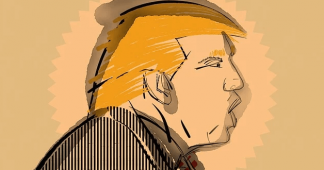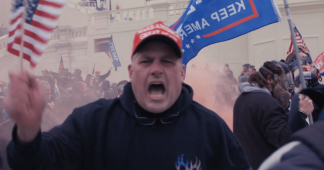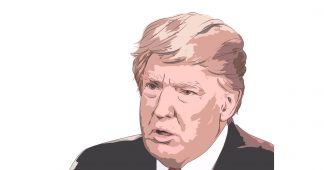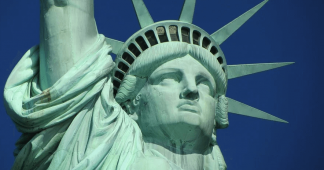The riot at the Capitol on Wednesday was a symptom of right-wing weakness, not power. The real danger isn’t a MAGA coup, but a restoration of the neoliberal status quo that produced the nightmare of Trump and his minions.
By Rafael Khachaturian ,Stephen Maher
Jan.8, 2021
But alarming as the scenes in Washington were, these events in fact represented a significant defeat for the far right. The riot and its quick repudiation by the political and economic elite made plain that there is currently little base in the state or among big capital for a Trumpist coup, despite the apparent — and unnerving — participation of police and security forces.
Wednesday’s violence was certainly disturbing. But with so much focus on the potential rise of fascism, we risk losing sight of the more immediate threat posed by a new president, backed by all the forces of the state and capital, strengthened by the riot, and determined to restore the neoliberal status quo ante.
Elite Backlash
Over the past four years, extreme-right groups like the Proud Boys became core constituents of the “mainstream” Republican Party base. The political and rhetorical style of Trumpism, the political conflicts it created, carved out space for these groups to mobilize and organize. Throughout his presidency, Trump chose to consolidate this hard-right base rather than fashion a wider centrist coalition. This allowed these groups to build, and increasingly enter the political mainstream.
Trump was the first president in modern history elected with very little backing from big capital. The chaotic, personalistic, and kleptocratic nature of his administration meant that he remained a problematic representative of the general interests of the capitalist class. Nevertheless, prior to the pandemic, tax breaks, deregulation, economic growth, and a booming stock market allowed him to enjoy quiet support among Wall Street and big business — and to build a sufficient popular constituency.
Yet in the course of his refusal to accept the results of the 2020 presidential election, these bases of support shrank to the most militant core. In the wake of the siege on the Capitol, whatever inroads these hard-right forces made into mainstream politics appear to have collapsed, at least for now. This will only serve to deepen the crisis of the Republican Party, members of which either endorsed or at least accepted Trumpism, with various degrees of enthusiasm, over the past four years.
The takeover of the Capitol has laid bare the lack of backing, both among corporate elites and within state institutions, for far-right authoritarianism. Capital, it seems, is still committed to liberal democracy, which has served to safeguard its interests throughout American history. Trump was unable to build a base of power within the state sufficient to usurp its normal constitutional and juridical processes — as shown in his ongoing battle with the “deep state,” and the alienation of the military and national security apparatuses.
On Sunday, none other than Dick Cheney organized every living secretary of defense to sign a statement, published in the Washington Post, repudiating Trump and insisting the armed forces would not participate in efforts to overturn the election. Now, major business organizations have issued some of the harshest statements in their histories rebuking Trump and calling for an end to the chaos of his presidency.
The National Association of Manufacturers — which generally leans Republican and has been the strongest source of business support for Trump — called for Trump to be removed from office. Similarly, the larger and more powerful Business Roundtable also issued a strong condemnation and demanded Wednesday evening that Congress move ahead that night in declaring Biden the president-elect. BlackRock CEO Larry Fink and JPMorgan Chase CEO Jamie Dimon each issued their own condemnations, along with many others from a cross-section of American businesses.
Even before Wednesday’s events, the capitalist class had soured on Trump. In the days after the election, leading CEOs met to coordinate a business response to Trump’s anticipated contestation of the election results. If this gathering of a literal committee for the management of the common affairs of the whole bourgeoisie indicated anything, it was that they saw securing political stability, and ensuring the integrity of liberal democratic institutions, as squarely in their interest.
Blackshirts, Brownshirts, and MAGA Chuds
The rise of German and Italian fascism in the twentieth century took place in the context of severe splits within the ruling classes of these societies. Dynamic new capitalist sectors, especially advanced manufacturing, could not find space within existing state institutions for the expression of their political power. In response, they came to cultivate and support radical forces — fascist parties — which would restructure the state to accommodate their emerging supremacy within their national economies.
The riots in Washington have not emerged from such a division within the ruling elite and have left the American capitalist class more unified than ever. They have not only extended their support to liberal democratic state processes in general, but also to the Democratic Party and Joe Biden in particular.
To be sure, the Trumpian right will hardly vanish from the political stage when the transfer of power does occur. Nor will GOP primaries stop serving as engines of far-right radicalization once Trump leaves office. Indeed, Trump himself is an outcome of this very dynamic.
For these reasons, we should remain vigilant about the shape and direction that the far right takes after Trump. In particular, we should watch for footholds they might establish among the police and border control, as well as at the electoral level. This will be especially important going forward, as they may feel emboldened by the experience of storming the Capitol.
As establishment Republicans seek to distance themselves from Trump, they will have to navigate the contradictions between an angry and mobilized far-right base, on the one hand, and building a broader electoral coalition, on the other. As the congressional votes to certify the electoral college result showed, a significant number of House and Senate Republicans were willing to question the legitimacy of the election — sitting in the very chambers that had been stormed by the angry right-wing mob just hours before.
In addition, the GOP remains entrenched in state legislatures, which only became more significant in the wake of the recent election. This being a census year, this power within state governments will be crucial in allowing the Republicans to gerrymander districts, helping them maintain electoral power for the next decade. So too are they firmly ensconced within the courts — thanks, in part, to Trump.
This is particularly concerning in light of a recent poll showing that 45 percent of Republican voters approved of the storming of the capital. Yet this is a far cry from the 87 percent of Republicans who approve of Trump — suggesting that even many Republicans who support Trump were turned off by the attack. It is also far too low a number to win a national election, especially in light of how this figure contrasts with attitudes toward the attack among Democrats (96 percent oppose) and independents (two thirds oppose). It will be difficult for the GOP to maintain its radical base while also winning nationwide office.
Still, unless GOP voters are polarized against the extreme right, and turnout for Republican primary contests increases dramatically, the party could continue to be a vehicle for building this hard-right base at the state level and in congressional races. The poll numbers certainly suggest that these forces have plenty of room to organize and recruit.
Their ability to do so will hinge on the extent to which the motley far-right coalition can be held together without completely relying on the institutions of the national Republican Party. And, of course, the ability for these forces to pose a real threat to liberal democracy will ultimately depend on attracting support from big capital — a possibility that, for now, seems remote.
The Riot as a Teachable Moment
It is up to the Left to expose the linkages between the Republican Party and the far-right groups it has systematically mobilized and encouraged — and which will no doubt come under closer state scrutiny as Biden takes office. Highlighting these ties could create further divisions within the Republican Party, with the goal of fracturing and dismantling it as a political force.
However, focusing exclusively on the specter of a fascist threat will only serve to enable a restoration of bipartisan neoliberal stability under Biden — exactly what created the conditions for the extreme right’s growth in the first place. Democratic control of the Senate certainly improves the Left’s chances to advance a progressive agenda. But it does not, on its own, save us from a return to austerity over the longer term, or bring an end to ecological and social devastation.
Only by organizing and fighting, both on the terrain of the state and in the streets, can the Left hope to make any real progress toward addressing the climate emergency, mitigating the social crisis wrought by decades of neoliberalism, and expanding vital programs for social provision, such as Medicare for All. And this will mean not just defeating the Right, but also taking on Biden and the Democratic establishment, now poised to serve as the crucial vehicle for renewing the neoliberal consensus
Published at jacobinmag.com











